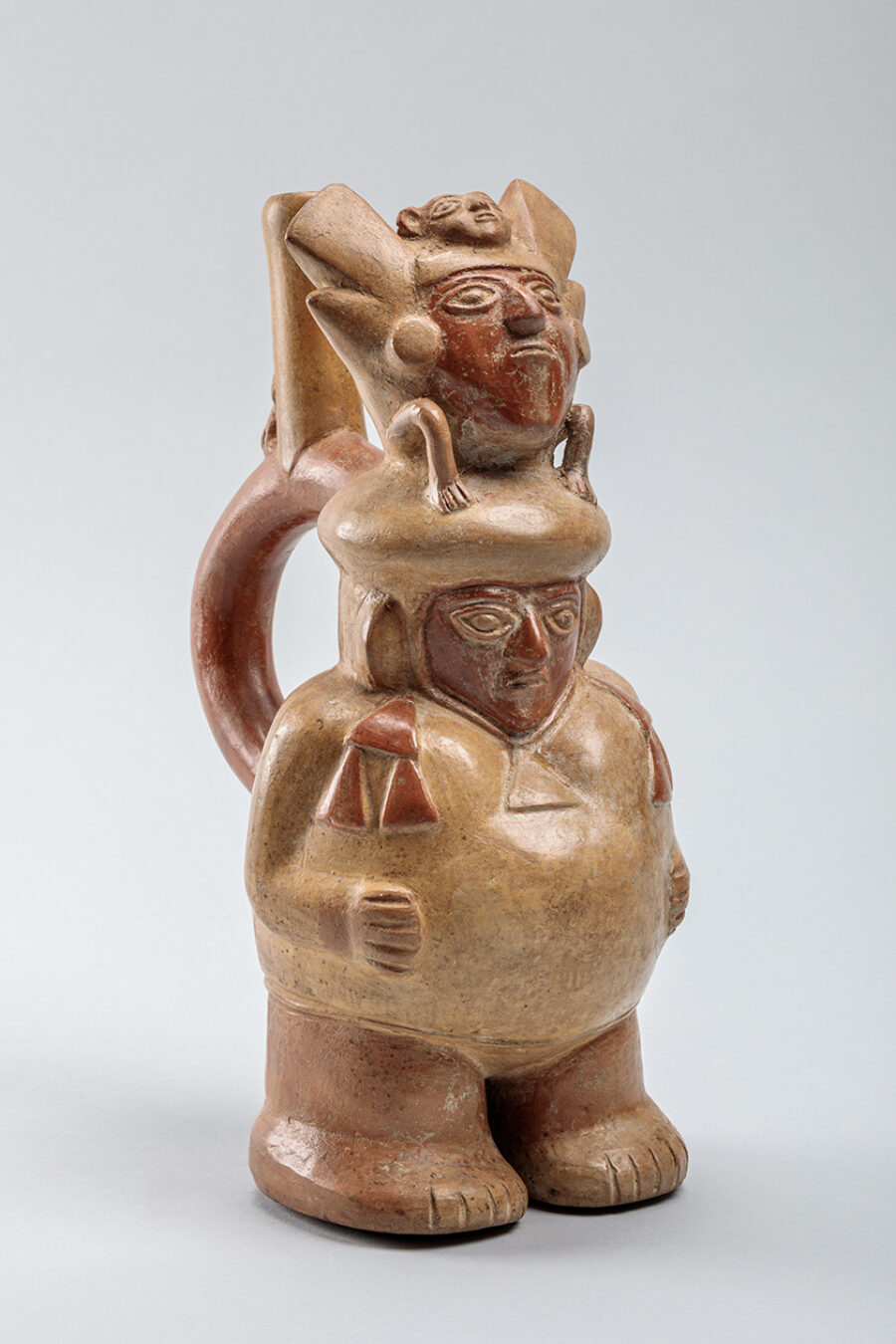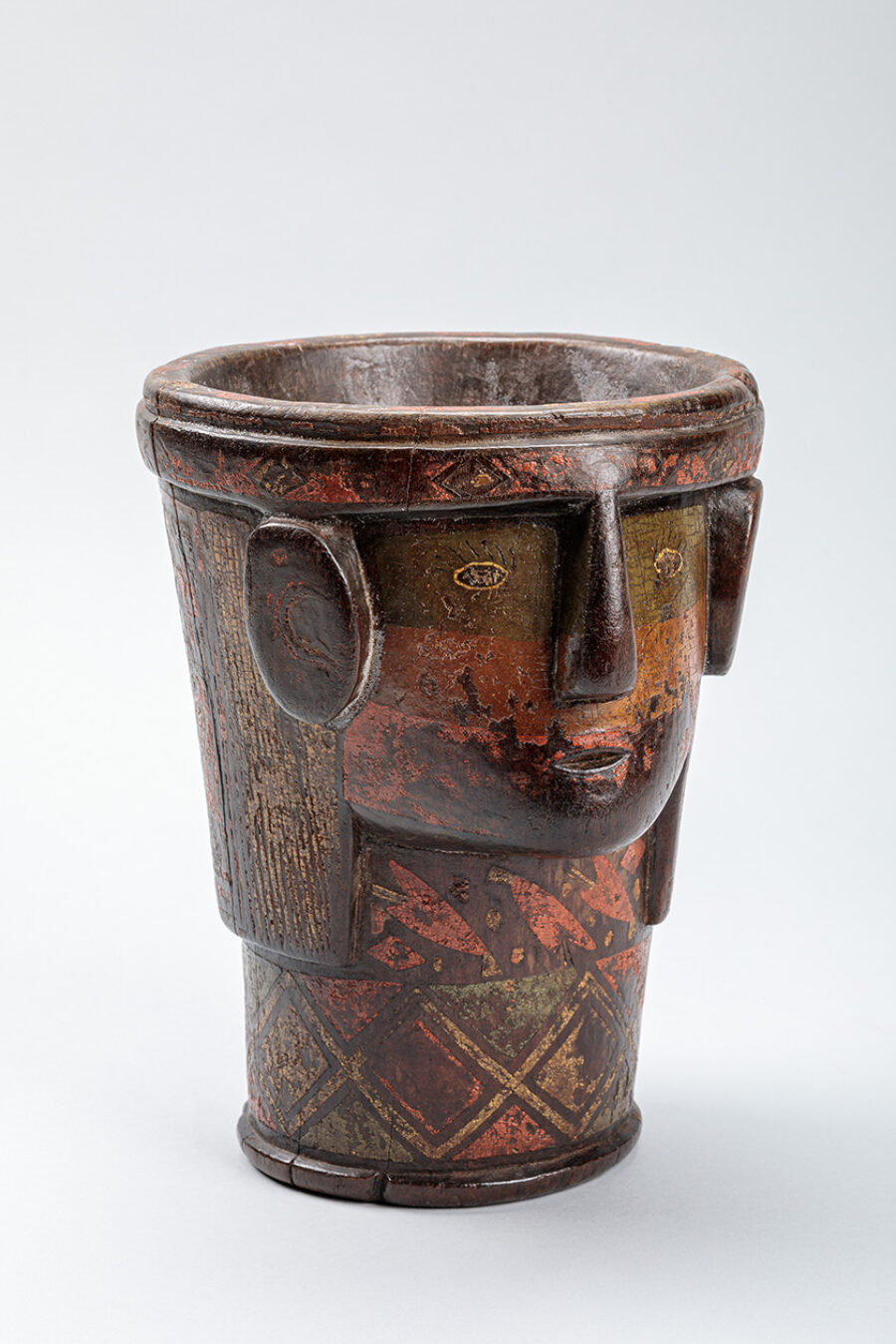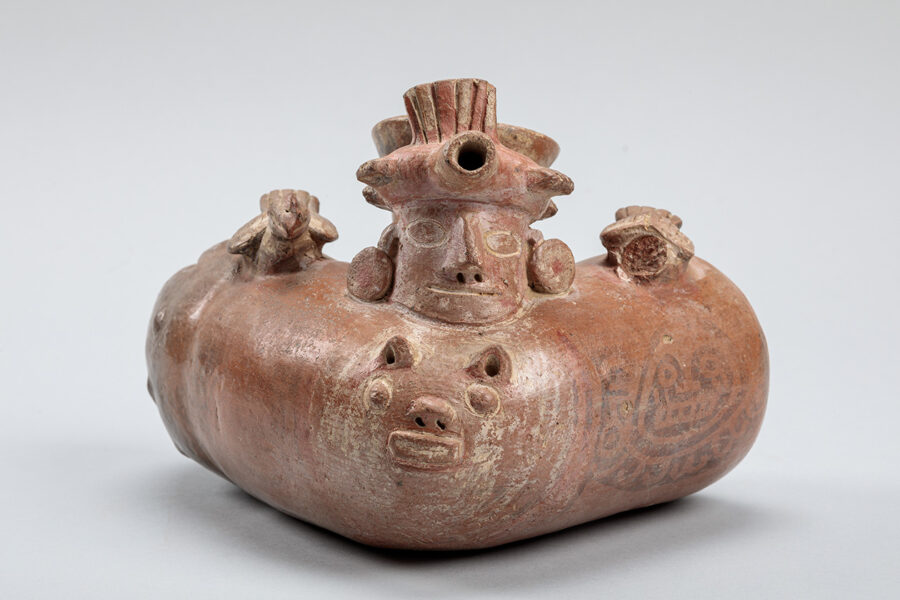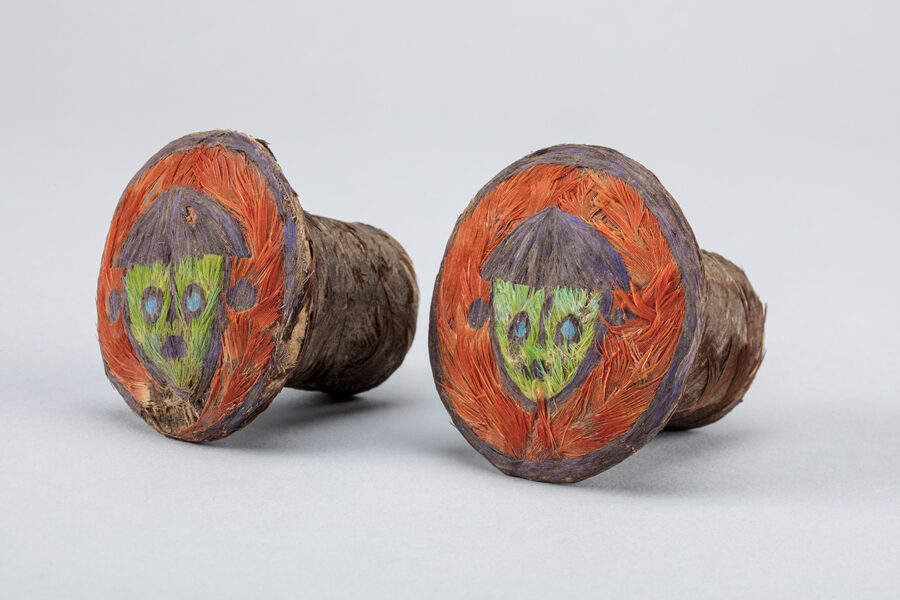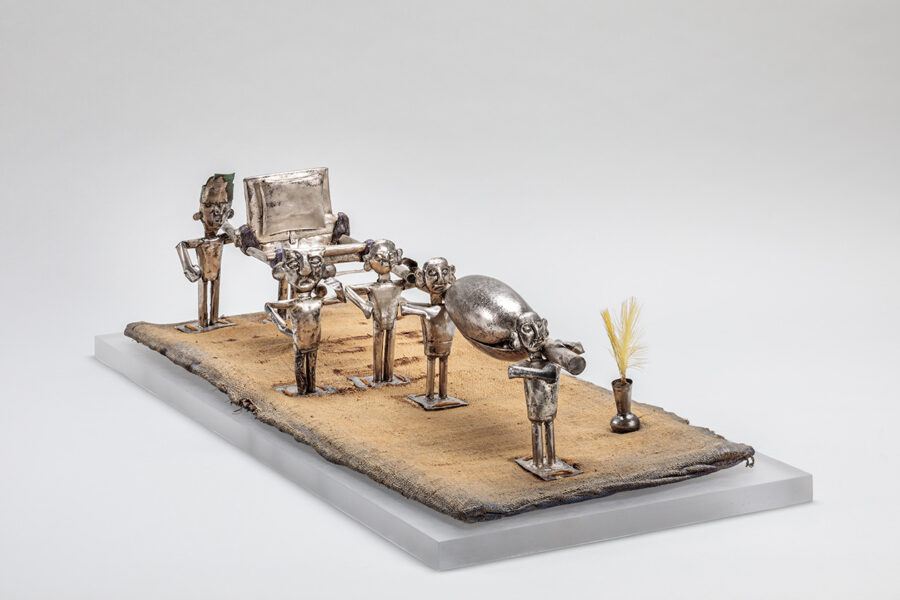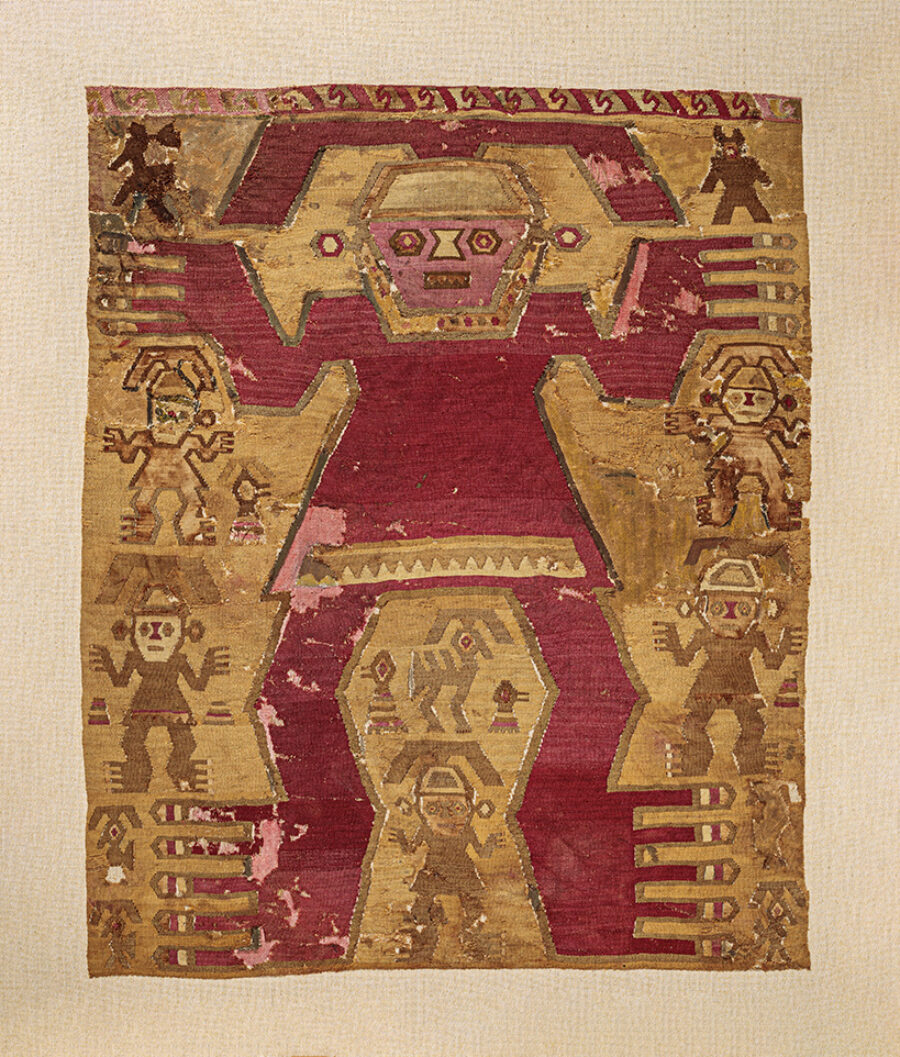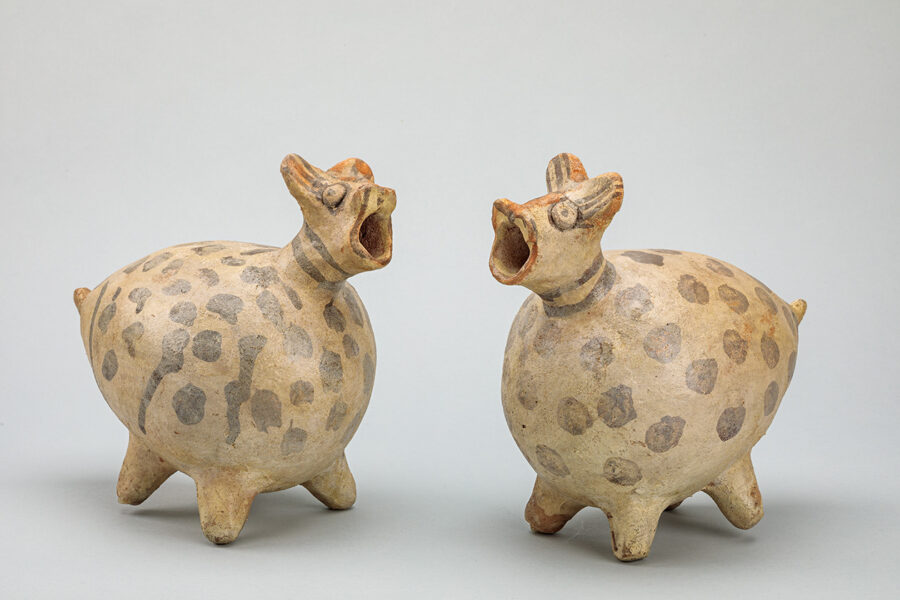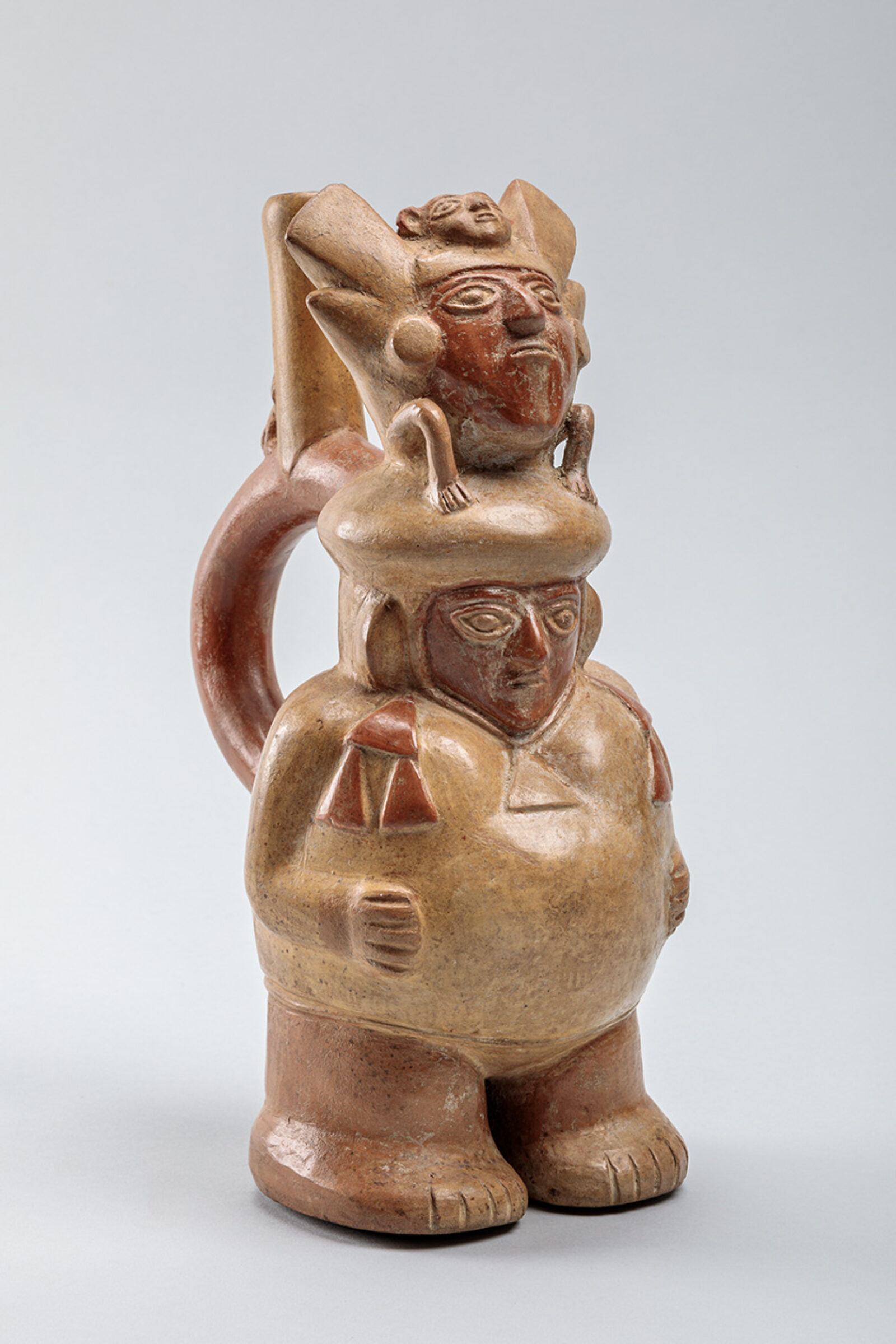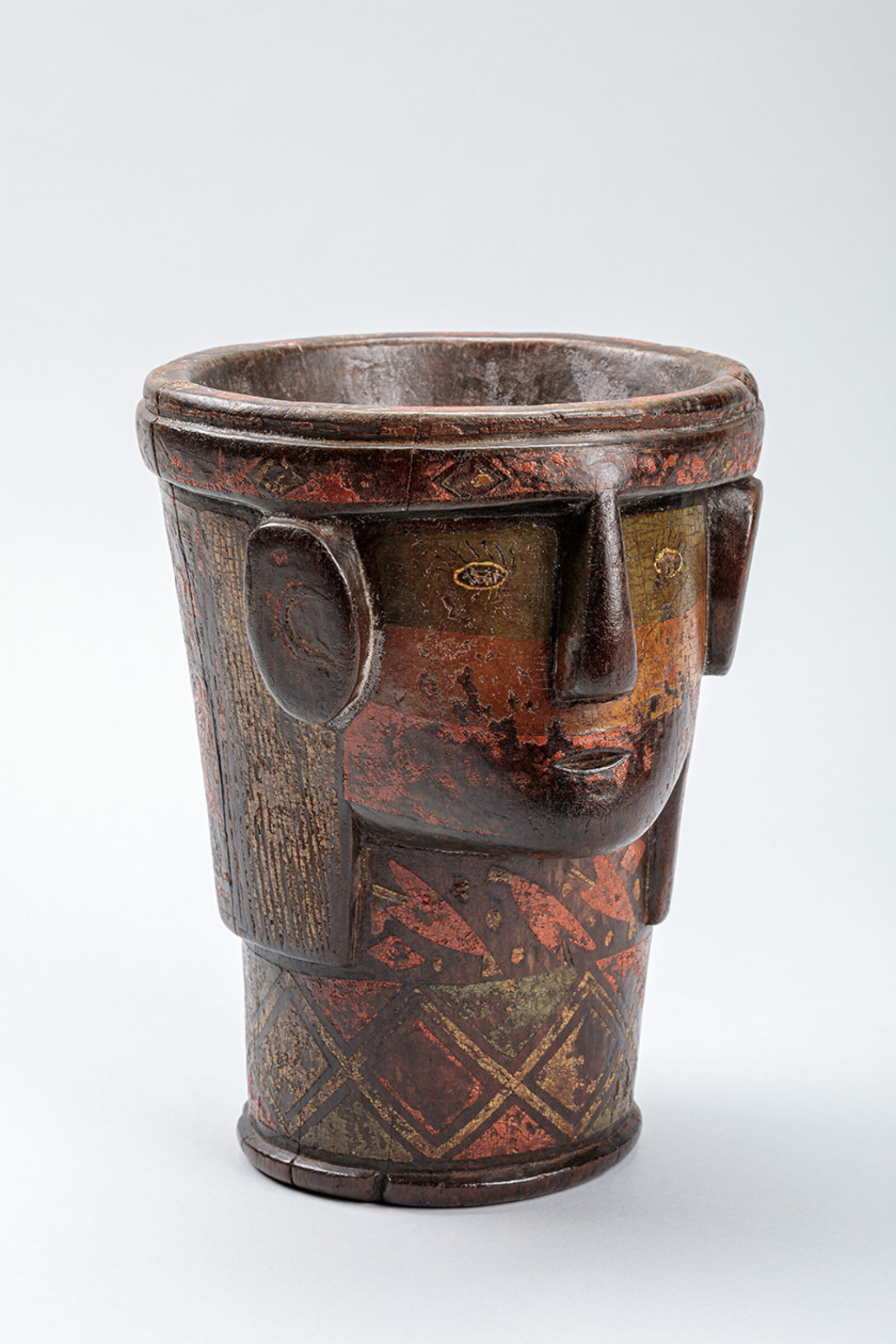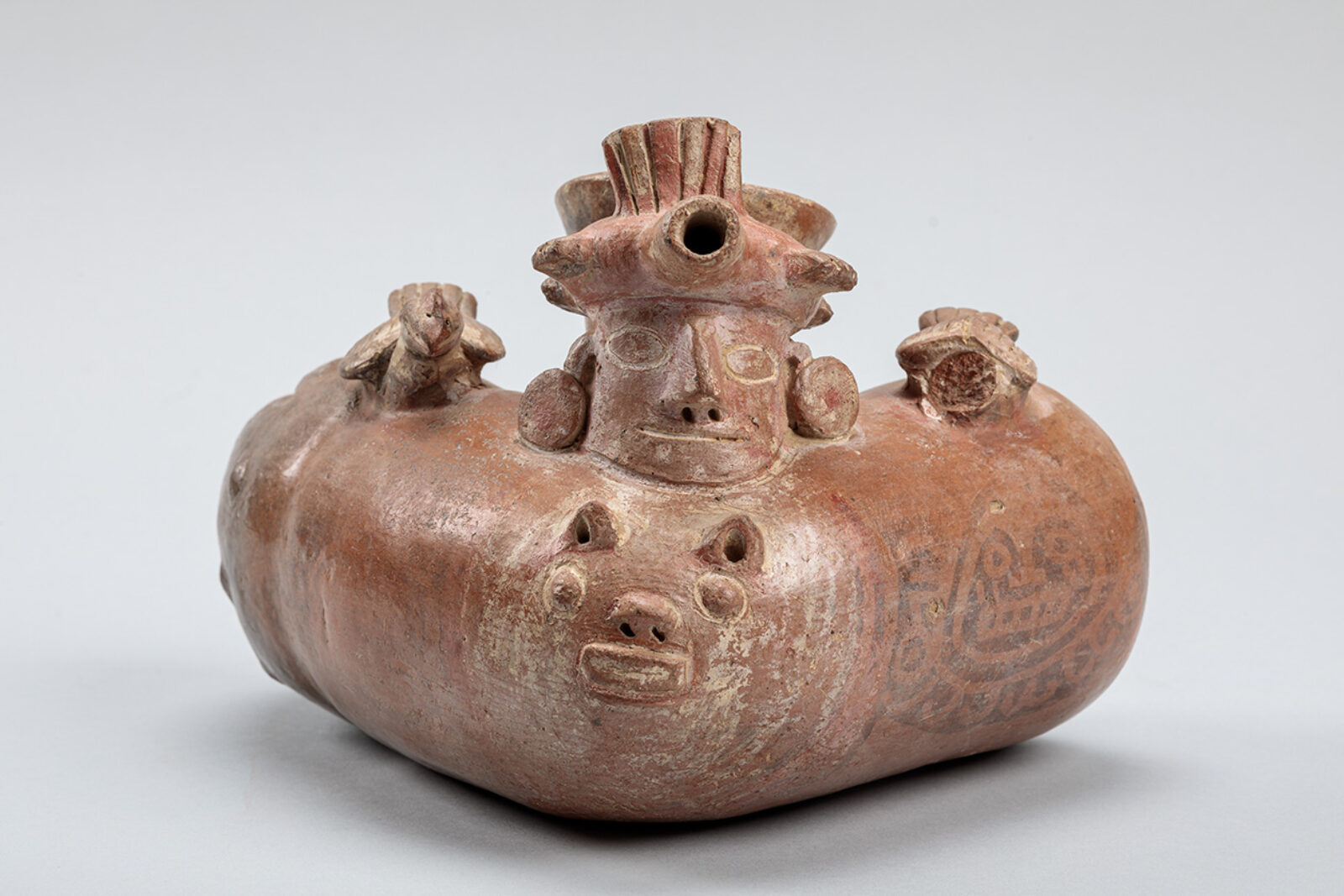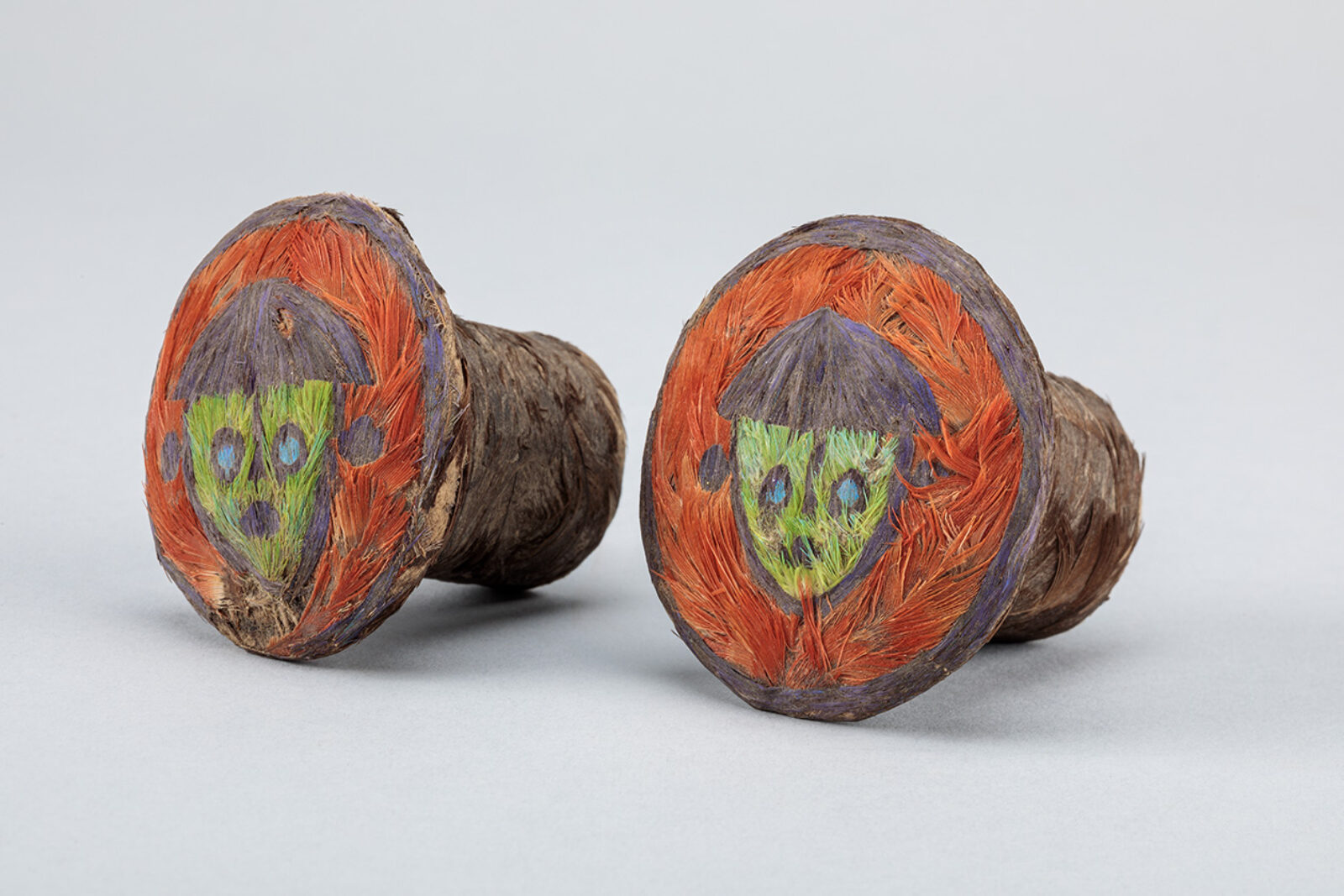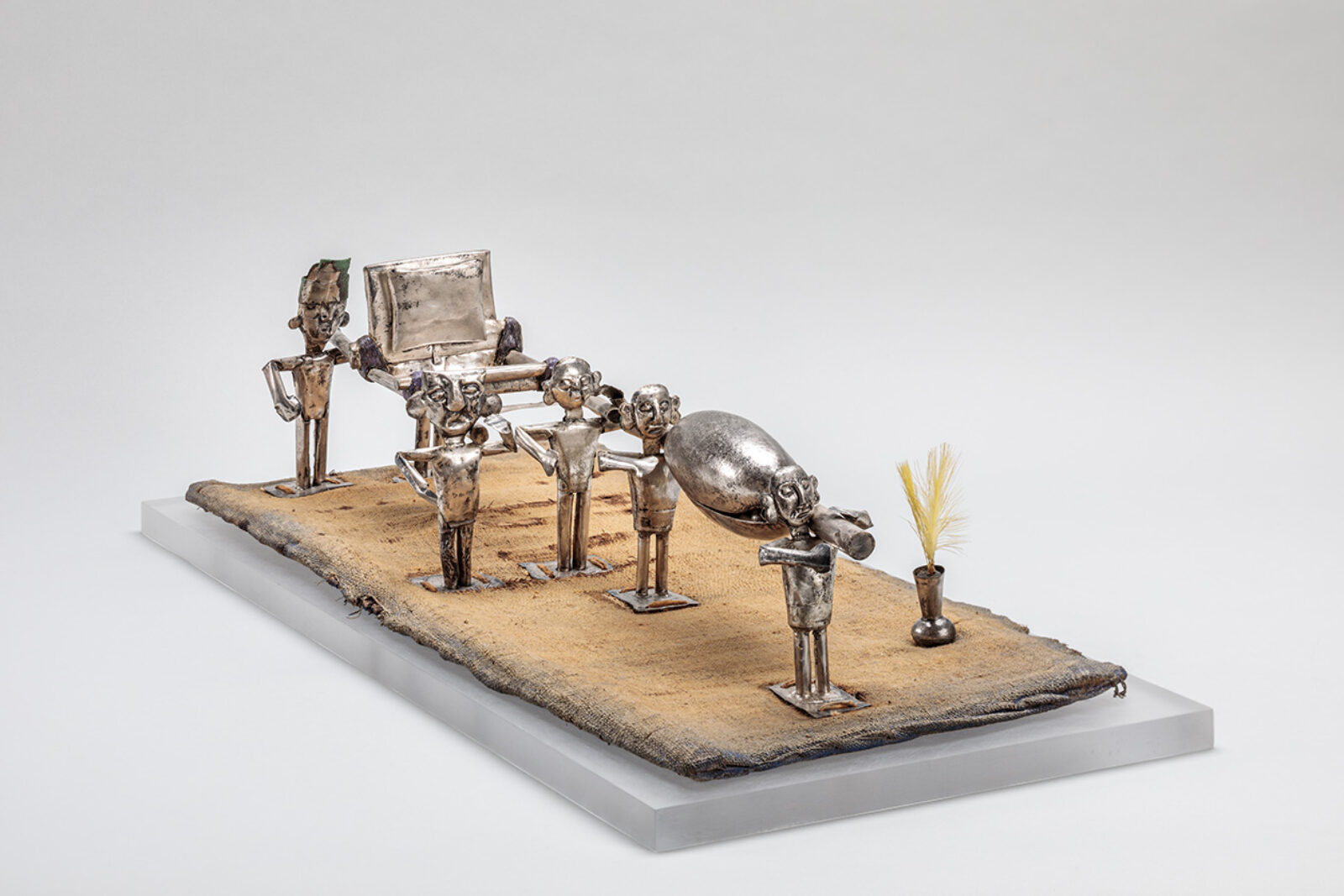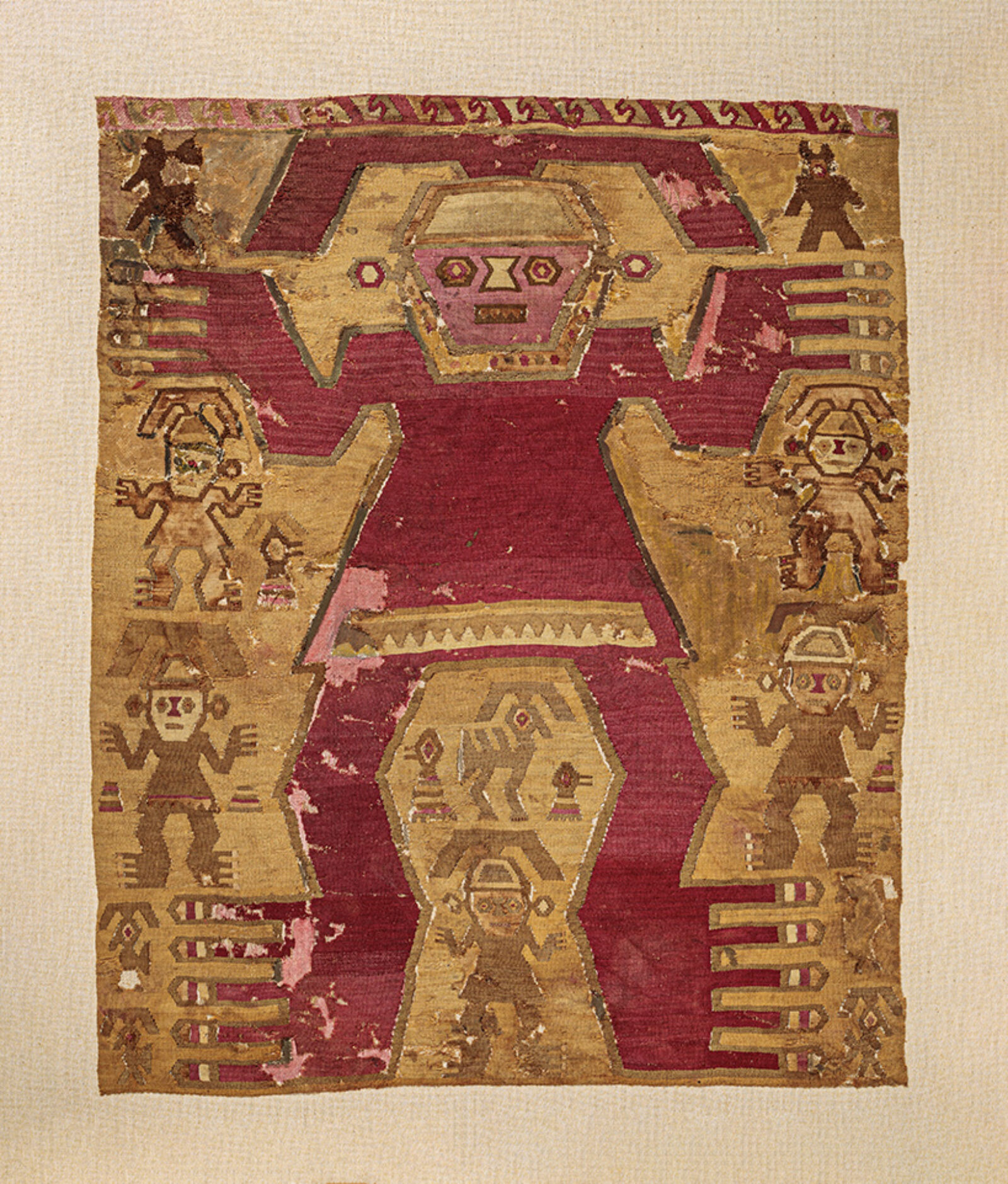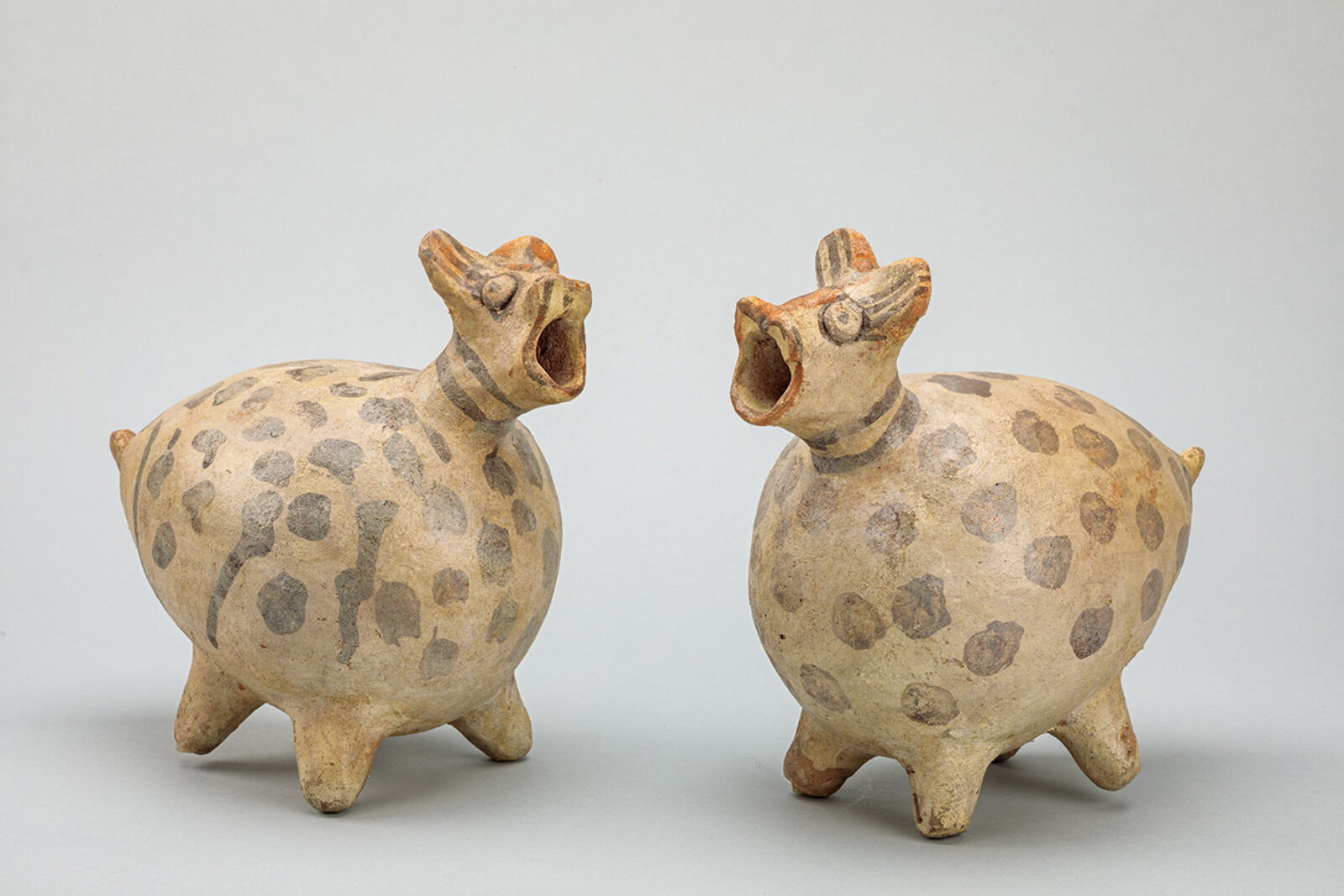Andean Art
article
By Allyson Purpura and Kasia Szremski
In an ambitious new project, the Krannert Art Museum (KAM) is partnering with the Center for Latin American and Caribbean Studies (CLACS) as well as scholars and descendent communities across the Midwest and in Peru to completely reinstall its collection of pre-Hispanic Andean art. Acquired in 1967 thanks to a massive community fundraising campaign, and featuring compelling textiles, ceramics, and objects fashioned in gold, silver, wood, and shell, KAM’s pre-Hispanic Andean art collection was once one of its star attractions. However, in recent years the installation has languished, in part due to an outdated installation that has not been updated since 1988. Set to open in spring 2025, the new installation seeks to reinvigorate interest in the collection by completely reimagining the use of gallery space and centering the voices of Andean artists and communities.
Traditional approaches to pre-Hispanic art tend to group objects by culture or time period, effectively silencing the works by obfuscating deep connections that existed across time and space. Working with Toronto-based designer Julia de Castri, co-curators Allyson Purpura, senior curator and curator of global African art at KAM, and Kasia Szremski, associate director of CLACS, have upended that approach and brought new life to the gallery by creating all new casework, layouts, and interpretive frameworks. Objects will now be grouped thematically in order to tell two parallel stories: the first centers Andean communities as active agents in creating their own art histories, and the second explores the fraught histories through which the objects on display were looted and transformed from burial goods into global commodities for sale on the international art market.
The installation will also feature a dynamic, interactive digital platform co-created in partnership with municipal museums in Peru and the communities they serve. The platform will deepen object stories with multimedia applications designed to bring past and present Andean voices into conversation and provide researchers and descendant communities in Peru with sustained access to and involvement in the research and interpretation of their own cultural heritage.
The project’s digital platform creates also an extraordinary opportunity to extend these objects’ stories well beyond the physical limitations of the gallery. The exhibition space becomes global, encompassing the Andean spaces and communities where, hundreds and even thousands of years ago, these artworks first came into being. In this sense, these artworks embody intersections of time and place in ways that only archeological objects can. In their own day, Andean objects were on the move, traversing boundaries between the living and the dead, and moving between coastal deserts and the central highlands through networks of trade, pilgrimage, even forced relocation. Though silent and inert when encountered on display, these objects activate the gallery with their extraordinary life histories of mobility and power – histories in which we are all implicated by virtue of their presence in this museum.
In addition to the digital platform, KAM’s education team, led by Rachel Storm, assistant director of engagement and learning, is also working on a new suite of exhibition programing which will offer a range of learning opportunities and cultural experiences for all ages, including performances with Andean musical and dance troupes, textile and ceramics workshops, and teach-ins with global Andean artists, scholars, and educators aimed to inspire active engagement with the past, present, and future lives of Andean artistic achievement. Through these combined efforts, the new gallery will be a vibrant space that brings scholars, students, and community members from Champaign-Urbana, the broader Midwest, and Peru together in celebration of Andean Art.
Exhibition Credits:
The project has been supported by grants from the University of Illinois Presidential Initiative for the Celebration of Arts and Humanities (2019), the Institute for Museum and Library Services (Museums for America 2020), the Helen Frankenthaler Climate Initiative (2020), and the National Endowment for the Humanities (Implementation grant 2022). Additional funding provided by the Rosann Gelvin Noel Krannert Art Museum Fund.
